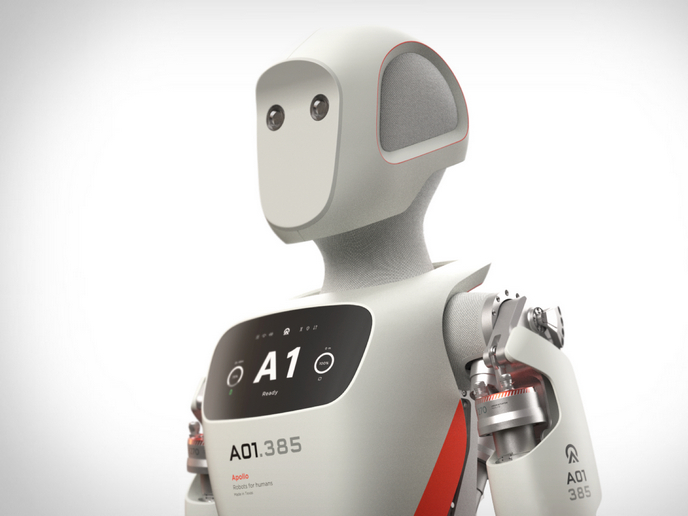Apollo is here to do the jobs you don’t want to
On 23 August, American robotics start-up Apptronik introduced the 1.7-m 73-kg Apollo(opens in new window), hailed as “the first commercial humanoid robot that was designed for friendly interaction, mass manufacturability, high payloads and safety.”
One giant step for industrial robotics
The company blog(opens in new window) gushed over its innovation: “Building Apollo has been an act of love. It is our way of showing our appreciation to the rest of humanity. This is our offering, however big or small. We hope that we can inspire future generations to show just what we are capable of as humans. In the same way we were inspired by those who came before us. We have poured our humanity into this machine. We believe it has the potential to dramatically improve the way we live on Earth... and take us so far beyond.” “Our goal is to build versatile robots to do all the things that we don’t want to do to help us here on Earth, and eventually one day explore the moon, Mars and beyond,” Apptronik co-founder and CEO Jeff Cardenas told ‘CNN’(opens in new window). “The focus of the lab was all about how humans and robots will interact in the future. As humans, our most valuable resource is time, and our time here is limited. And as toolmakers, we can now build for ourselves tools that give us more time back.” Millions of special purpose robots are only tasked with a couple of things. Cardenas called Apollo the “iPhone of robots.” He added: “The goal is to build one robot that can do thousands of different things. It’s a software update away from doing a new task or a new behavior.” “Humans have around 300 muscles in our bodies,” explained Dr Nick Paine, Apptronik co-founder and chief technology officer. “As engineers, our goal is to simplify complexity, so the Apollo robot has around 30 different muscle groups inside of its system that you need to do basic actions and activities.” Apptronik has teamed up with NASA. “My hope and my dream is that we will have general purpose robots that are fielded in space within the next 10 years and that we will be able to realize some of the benefits of having robotic systems that can allow the crew a much greater focus on things that humans do best — exploring and making scientific discoveries,” commented Shaun Azimi, leader of the dexterous robotics team at NASA’s Johnson Space Center.
Robot co-worker on the shop floor
One step at a time, though. For the time being, Apollo can lift 25 kg, and it will be used in the logistics and manufacturing industries. It’s going to make managers happy in factories, warehouses and large retail settings by performing repetitive manual tasks, such as bending down, picking up items and moving them. A series of videos(opens in new window) showcase the robot doing different tasks. Apollo uses electricity, instead of hydraulics that aren’t considered to be as safe. It can run for about 4 hours on a battery. Two are available, with four more on their way. No price tag yet, but expect to spend somewhere in the vicinity of an average car. Full commercial release is planned for the end of 2024.



